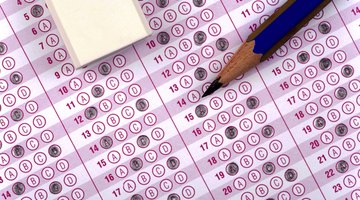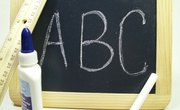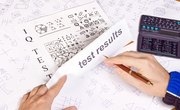The Scholastic Testing Service, or STS, High School Placement Test is a standardized test used for students entering high school. The HSPT was first used in 1955 and is specifically designed for use in admissions and to place students in high school classes. The test measures content-specific areas as well as cognitive ability.
The HSPT is a comprehensive exam, which is why it is so widely used. Additionally, the results of the exam are standardized, which means it is a reliable indicator for appropriate placement of freshmen entering high school.
What Is on the HSPT?
The HSPT is known for having a lot of questions. Be prepared to answer close to 300 of them. However, you will need to do so in a very short amount of time. Test takers are allotted 150 minutes to complete the test.
There are five main sections on the HSPT. Test takers will be assessed on verbal skills, quantitative skills (number sense and geometry), reading, math and language. Questions are multiple choice with three or four answer choices.
- Verbal Skills – This portion of the test will measure your command of language including usage, reading and social studies.
- Quantitative Skills – You will be tested on your ability to reason with numbers and number sense. There will be some general math and science questions.
- Reading Test – This portion of the test will measure reading comprehension, details in context and vocabulary.
- Math Test – The math test will measure how well you answer general math problems along with applications of math principles.
- Language Test – The language portion of the HSPT assesses your knowledge of grammar and mechanics, including spelling and punctuation.
How Is the HSPT Scored?
The HSPT results are determined by the number of questions you answered correctly. Test takers are not penalized for wrong answers. Since this is the case, it is always in your best interest to answer every question even if you are unsure of the answer.
The raw HSPT score is the summary of all of the correct answers. While your raw score is a summary of the correct answers, it is converted to the scaled score, which is a range between 200 and 800. An excellent HSPT score is 800. It is important to understand all of your HSPT results.
Types of Scores
Test takers will receive a complete analysis of scores, including a breakdown of performance for each subject area. These subscores will also include the scaled score and national percentile.
Your HSPT results will also include the composite score, which includes verbal, quantitative, reading, language and math as a total. This score is the battery composite score.
Your HSPT score will also be interpreted to a grade-equivalent score. This score represents the school-year grade with which your score is aligned. In other words, if you are in 8th grade, and your grade equivalent is 9.5, you are doing as well in 8th grade as other students who are in the middle of 9th grade.
HSPT Scores Interpretation
Knowing your scaled score is important. However, that score will also be converted to a percentile rank, which is also a valuable score to understand. Your score will be calculated to the percentile of test takers who scored better and worse than you. In other words, if your score is in the 95th percentile, then your score is in the top 5 percent of all test takers. Additionally, you scored better than 95 percent of test takers.
The HSPT also gives a measure of a test taker's future cognitive ability. It is important to know your cognitive skills quotient score. The CSQ score is determined by the test taker's age and performance on the test.
The CSQ scores have a range of 55 to 145, with an average score around 100. This score helps admissions offices by providing a general sense of overall intelligence and a predictor of future performance. A CSQ score of 130 or above places you in the top 3 percent of all test takers.
Related Articles
References
Writer Bio
Melanie Forstall has a doctorate in education and has worked in the field of education for over 20 years. She has been a teacher, grant writer, program director, and higher education instructor. She is a freelance writer specializing in education, and education related content. She writes for We Are Teachers, School Leaders Now, Classroom, Pocket Sense, local parenting magazines, and other professional academic outlets. Additionally, she has co-authored book chapters specializing in providing services for students with disabilities.











